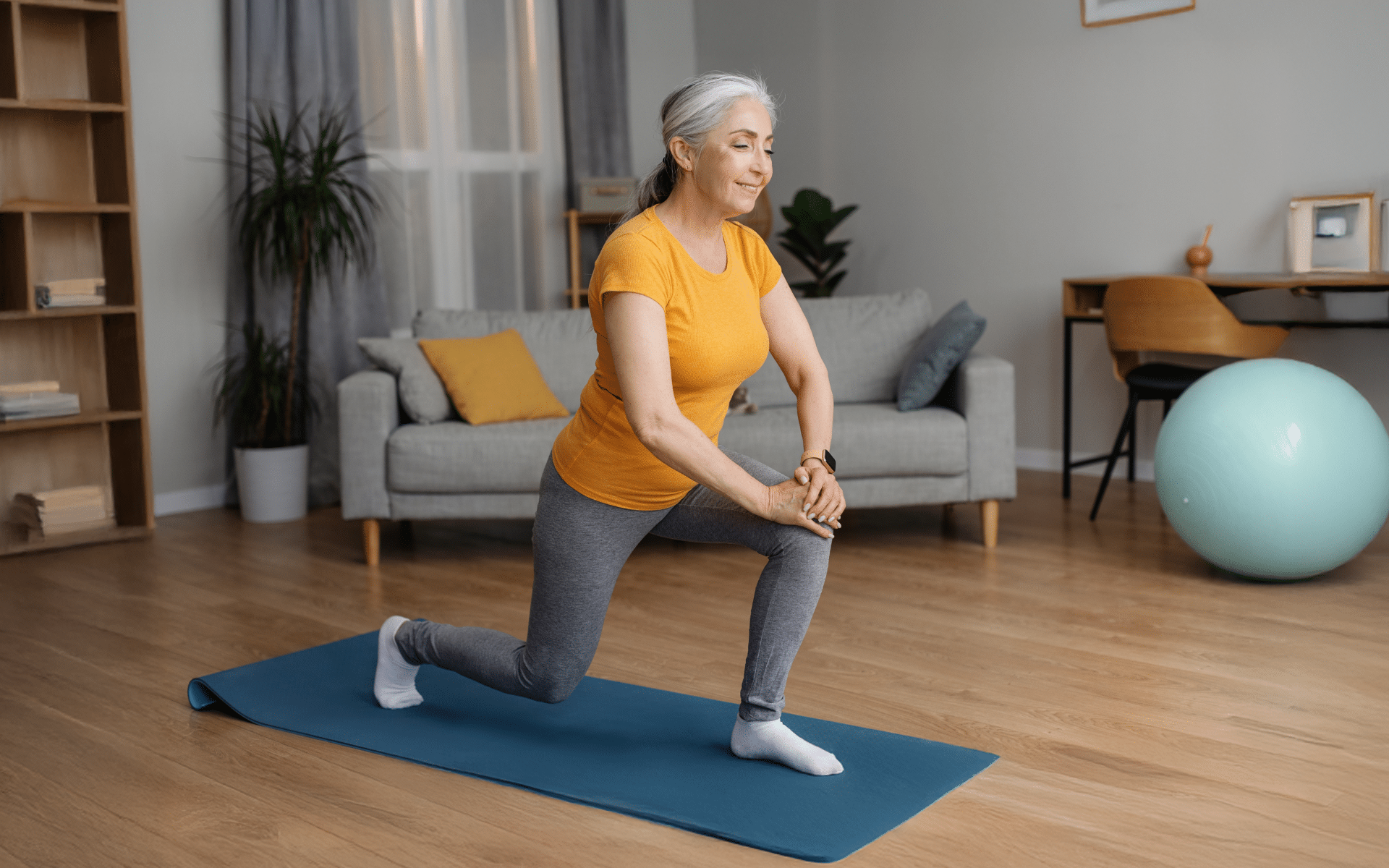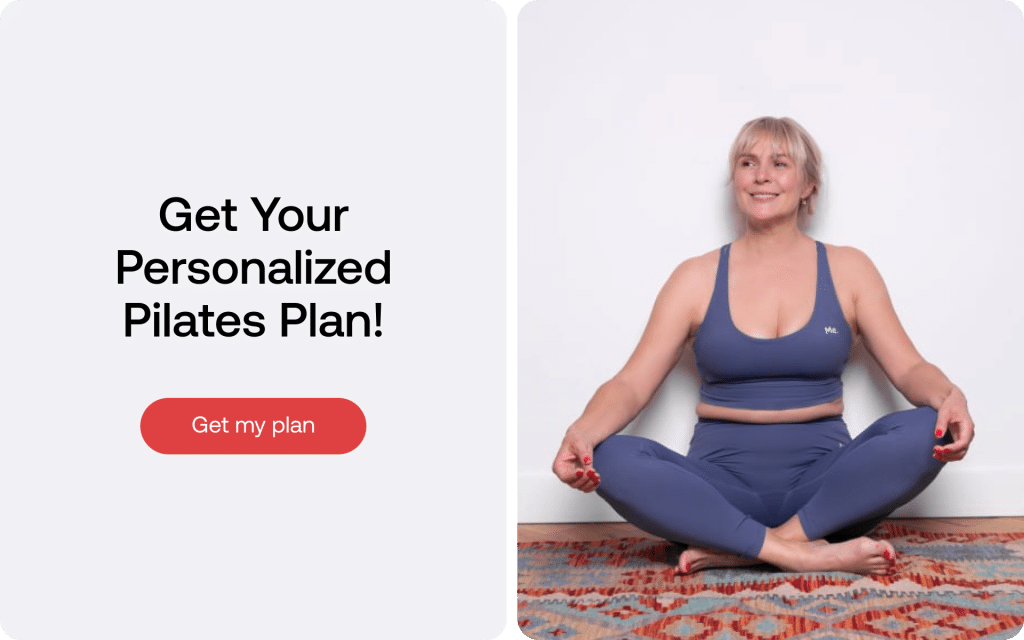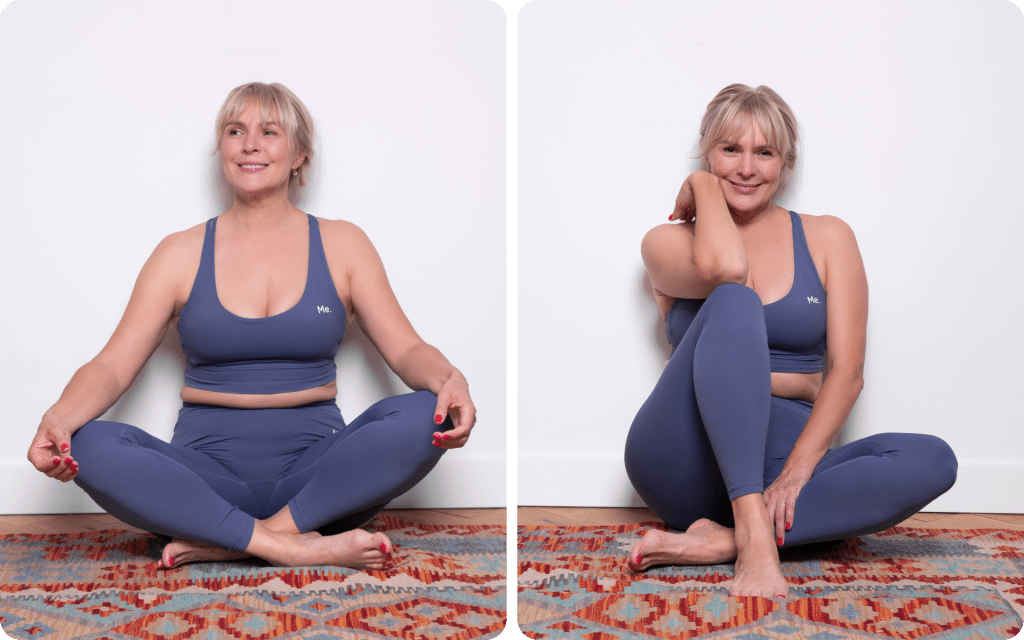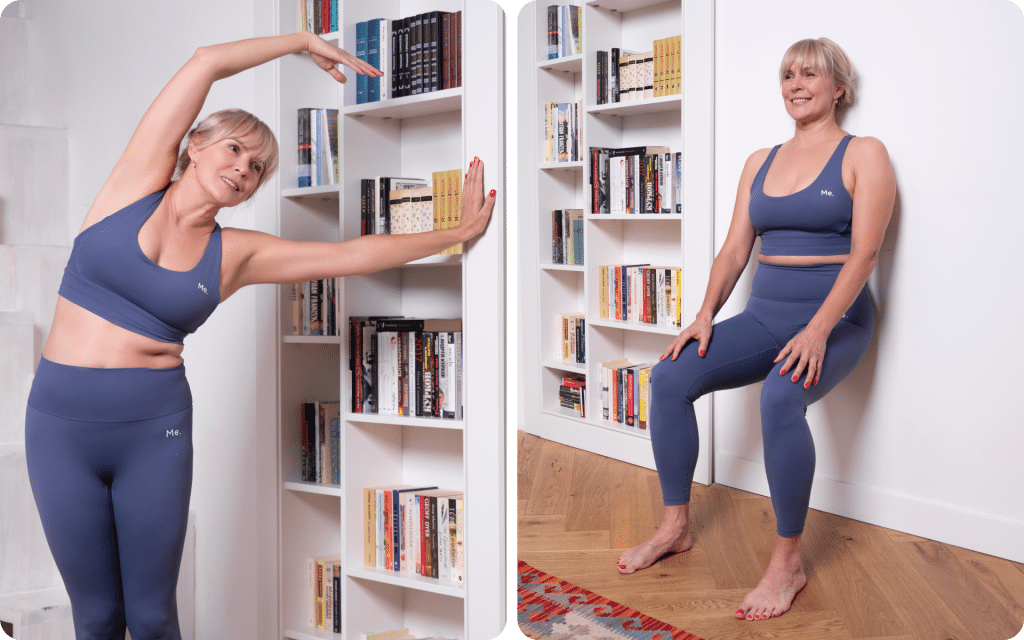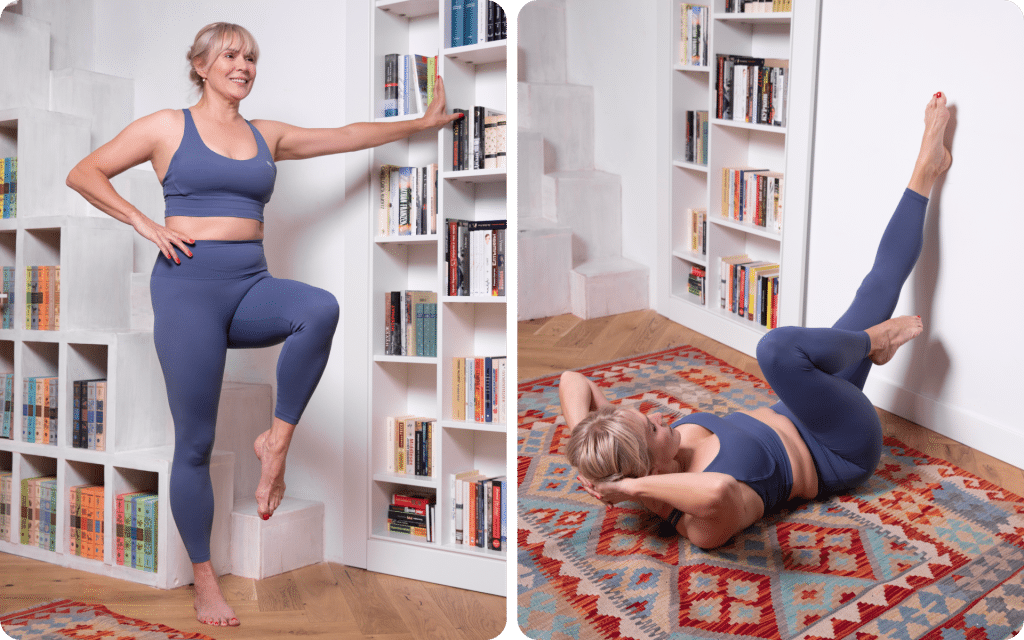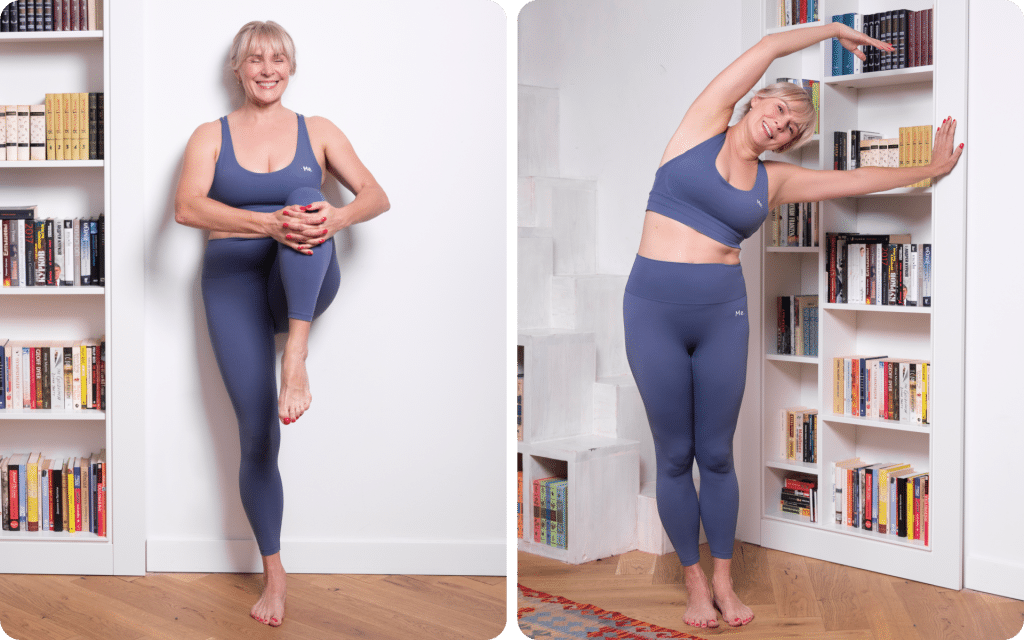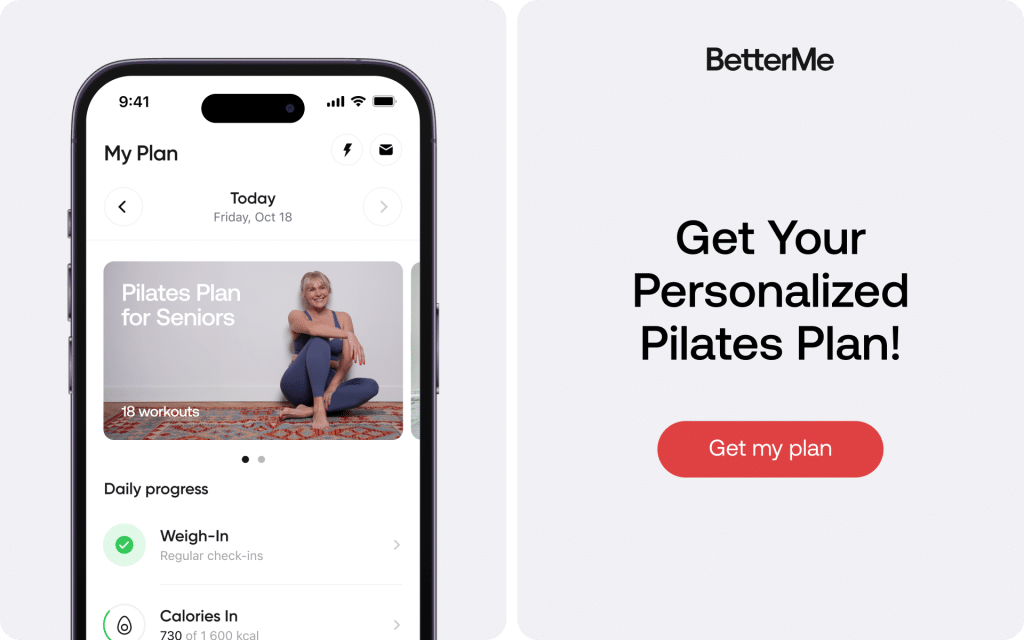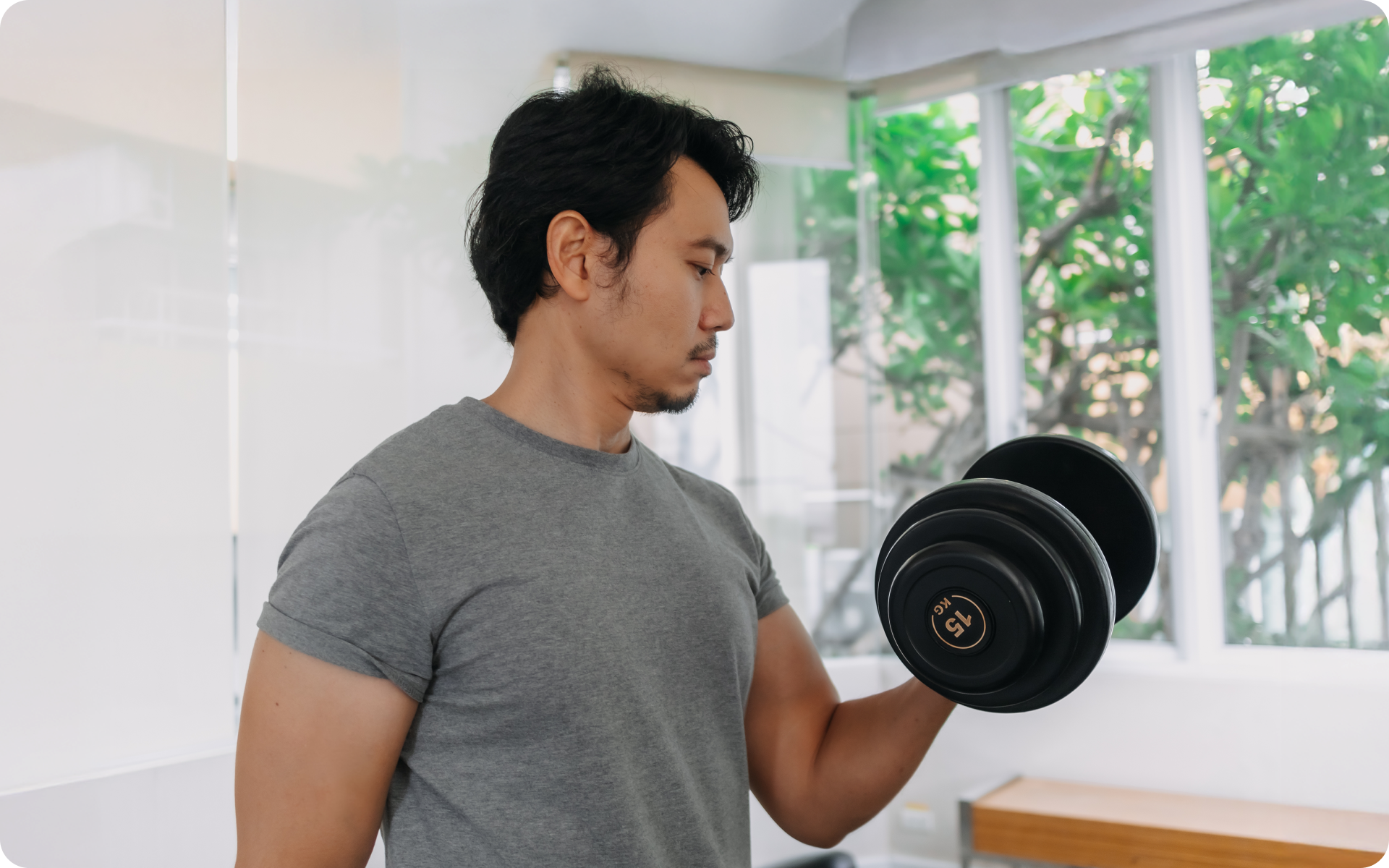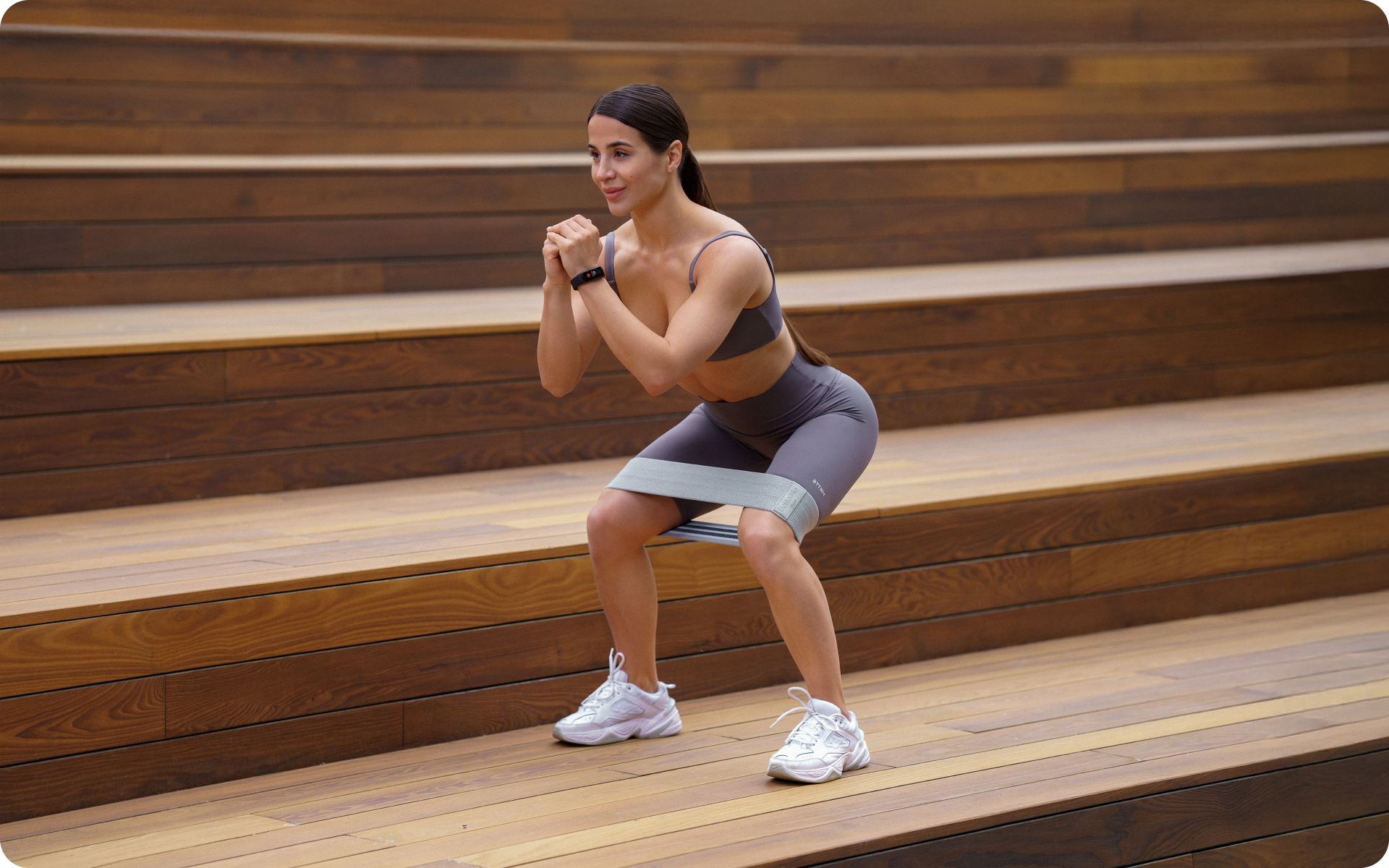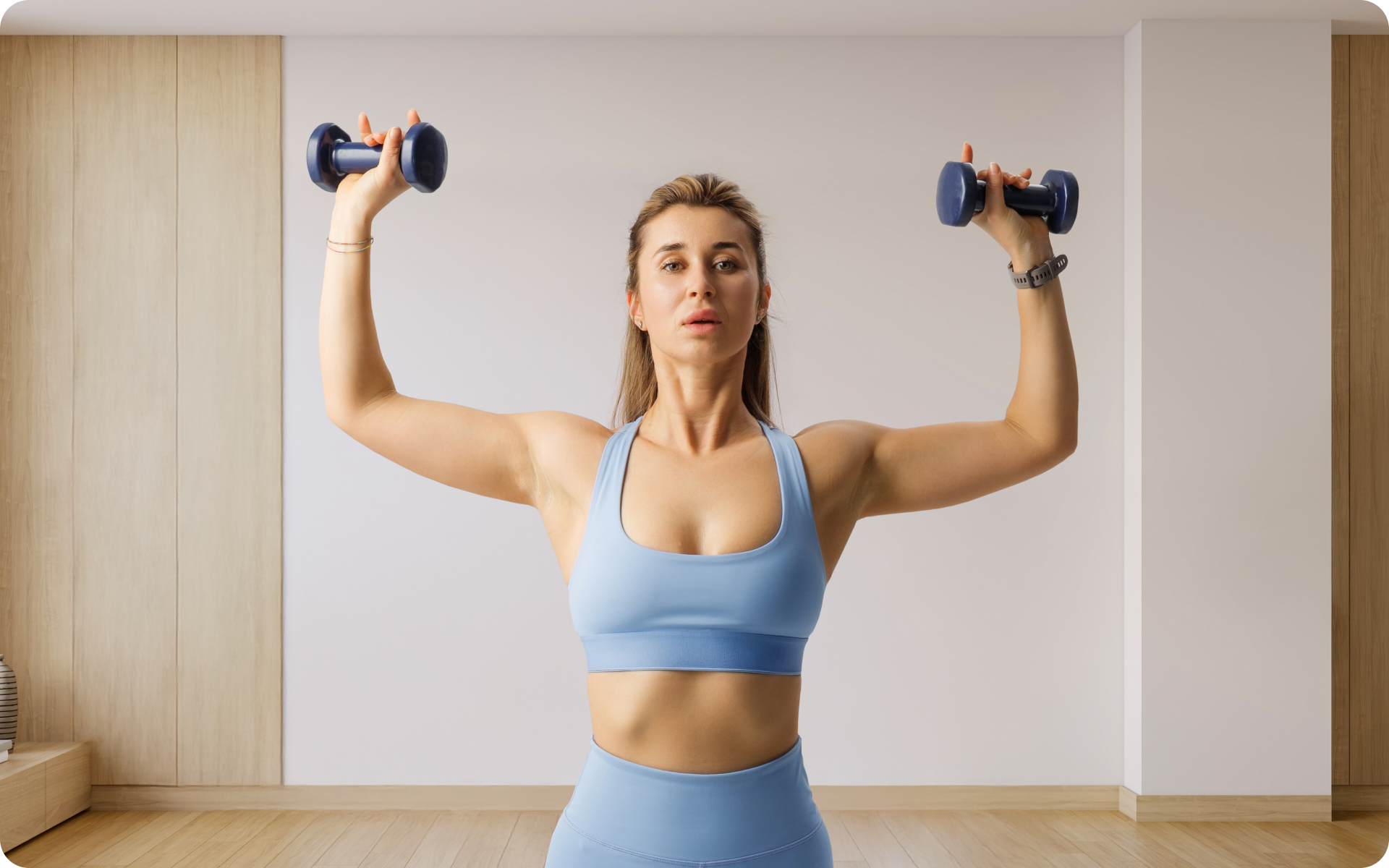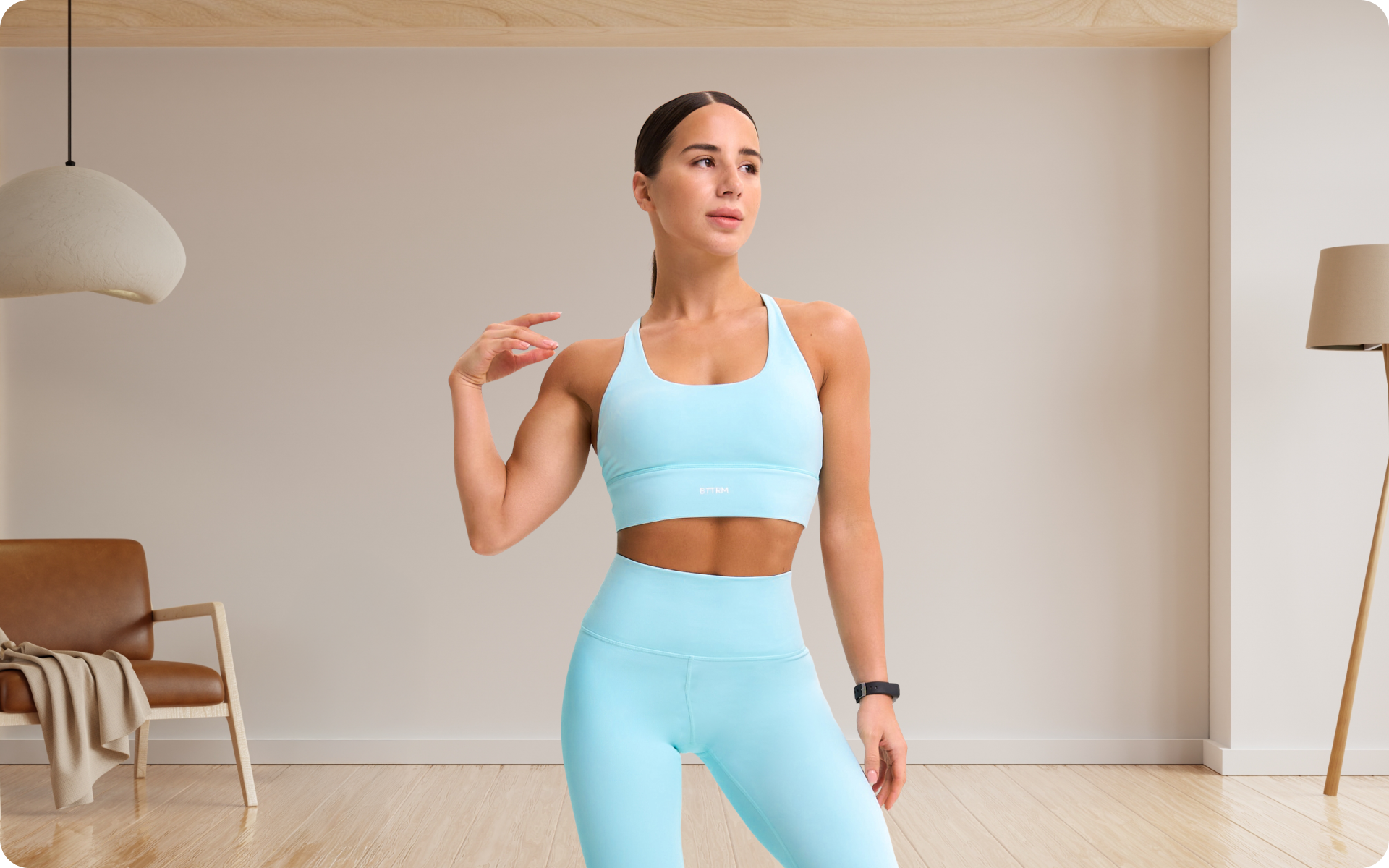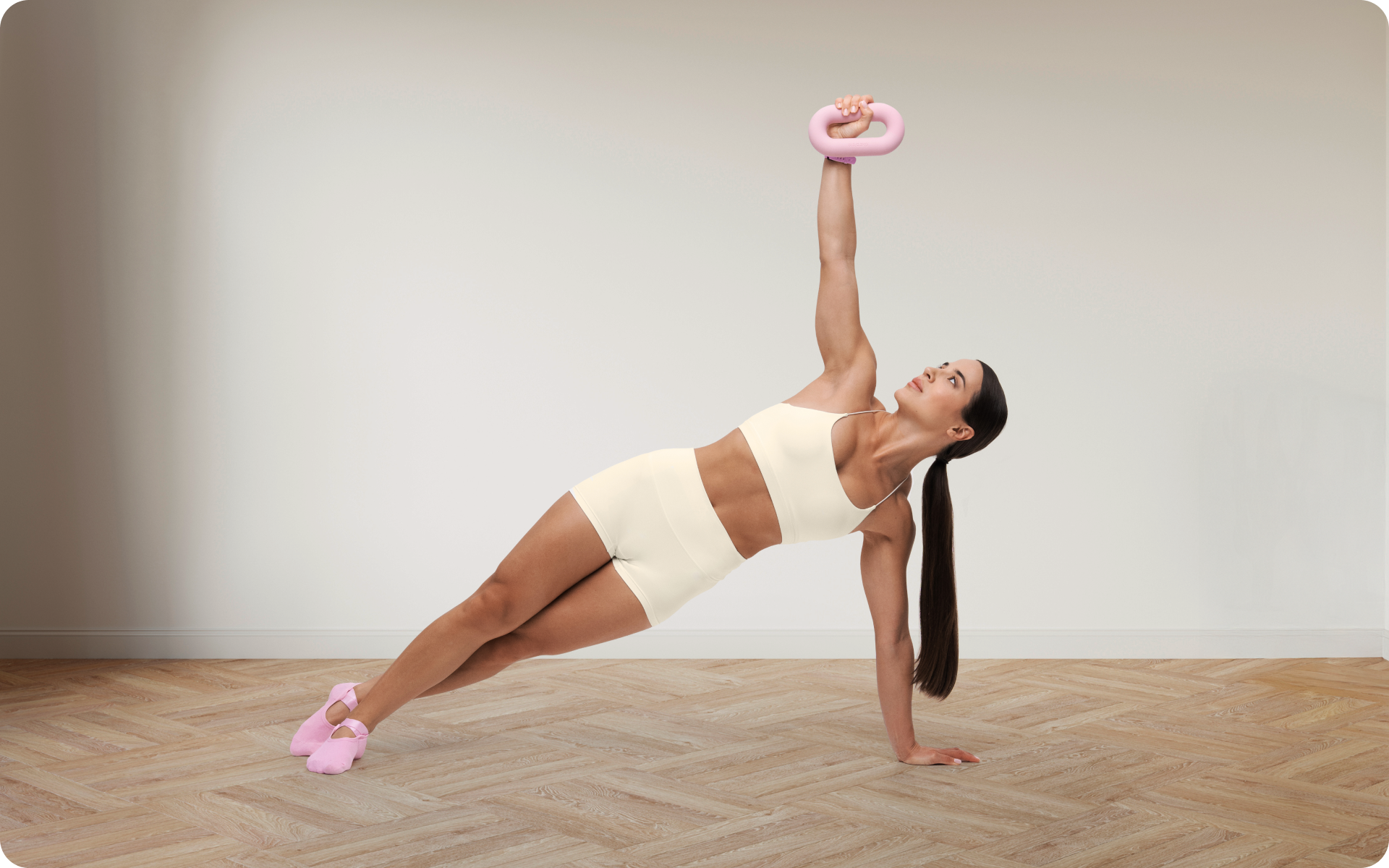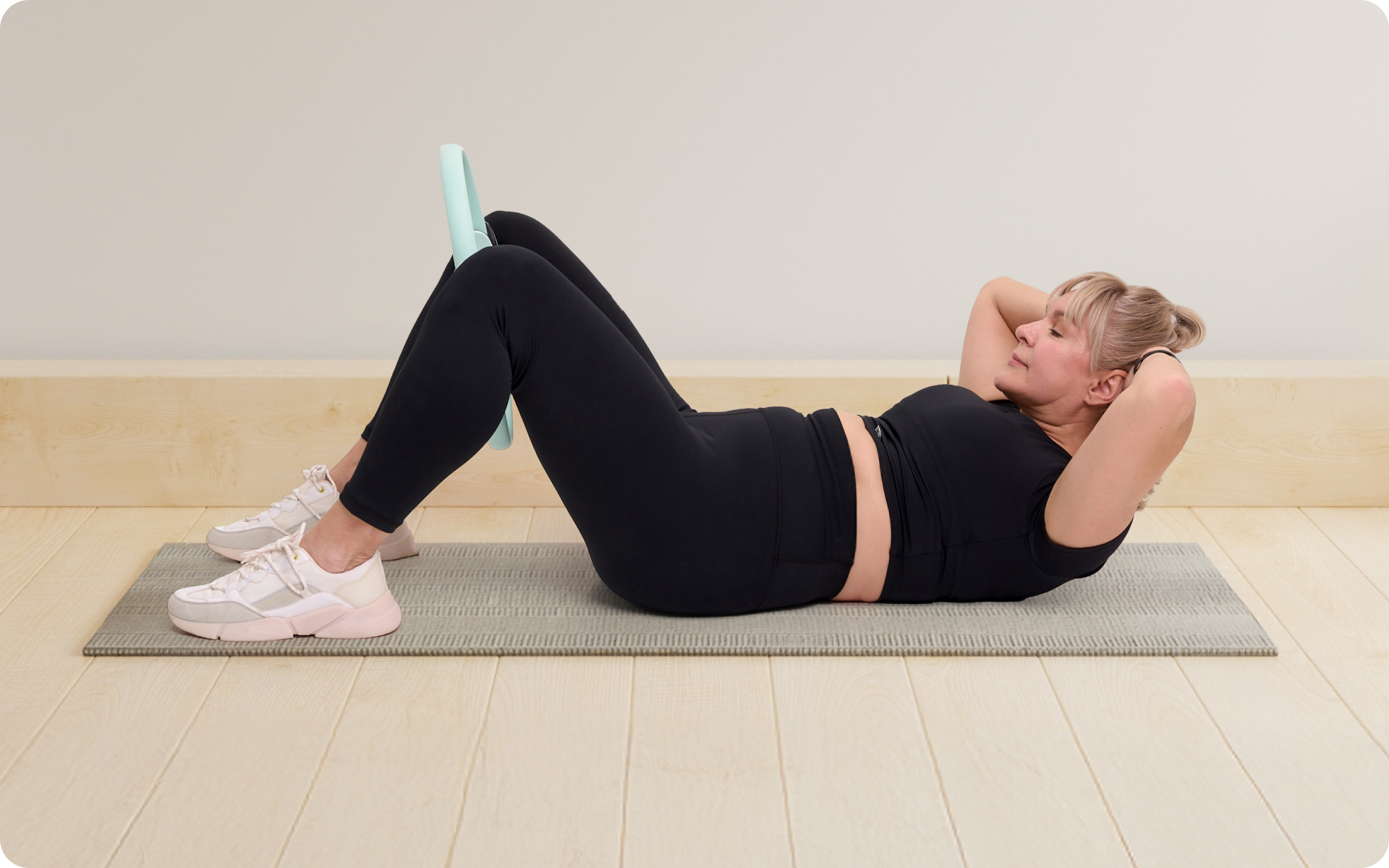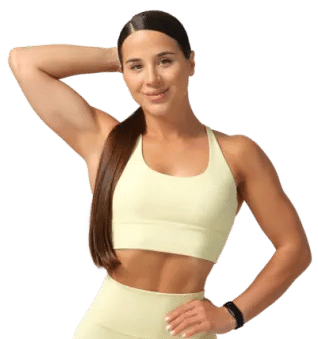It’s never too late to start strength training. This form of exercise has unique benefits for women over 50.
By preserving and even building muscle, women can improve their mobility, balance, and overall strength, which reduces the risk of falls and injuries.
Strength training can improve bone density, providing a significant defense against osteoporosis, which is more prevalent in postmenopausal women.
Beyond physical health, there are also remarkable mental and emotional benefits. Researchers have found regular strength training reduces symptoms of depression and anxiety, while also enhancing cognitive function.
You’ve made the right choice by incorporating strength training into your fitness routine, but there are a few dos and don’ts to remember.
Can A 50 Year Old Woman Get Back In Shape?
Getting back in shape at 50, or even starting your fitness journey for the first time, is not just possible—it’s empowering. Age is not a limitation; it’s simply an opportunity to approach fitness with:
- Wisdom
- Patience
- Determination.
Women in their 50s often find that improving their fitness brings incredible physical, mental, and emotional rewards. It’s about feeling stronger, healthier, and more confident in your skin.
BetterMe: Health Coaching app helps you achieve your body goals with ease and efficiency by helping to choose proper meal plans and effective workouts. Start using our app and you will see good results in a short time.
What Is The Best Strength Training For Women Over 50?
The best strength training for women over 50 has a few distinguishing qualities.
What is good strength training for women over 50 is unique to each woman.
The do’s and don’ts outlined below will help you navigate your options.
Modify and adjust based on fitness level and any pre-existing health conditions.
- Do Focus On Proper Form
Good form is non-negotiable in strength training. Proper technique helps avoid injuries and ensures you’re targeting the right muscles (1).
When performing squats or deadlifts, ensure your back is straight and your core engaged. If unsure about your form, consider working with a personal trainer or following expert-led instructional videos.
- Don’t Skip A Warm-Up
Jumping straight into lifting can put you at risk of straining your muscles or joints.
Always warm up for 5–10 minutes with light cardio or dynamic stretches.
This movement gets the blood flowing to your muscles, improving flexibility and range of motion. Neglecting a proper warm-up can cause stiffness and reduce the effectiveness of your workout (2).
- Do Include Weight-Bearing Exercises
Some weight-bearing exercises are:
- Lunges
- Bodyweight squats
- Resistance band workouts
The weighted exercises are particularly beneficial for women over 50.
These exercises stimulate bone growth, which prevents osteoporosis (3).
Add light dumbbells or resistance bands to your routine, gradually increasing the weight as you gain strength.
- Don’t Forget Rest Days
Recovery is just as important as the workout itself. Overtraining can lead to fatigue and increase your risk of injury.
Schedule at least 1-2 rest days weekly and listen to your body. If you feel tired or sore, taking an extra rest day or adjusting your intensity is okay. Remember, rest is when your muscles rebuild and grow (4).
- Do Start Slow And Progress Gradually
Strength training is a marathon, not a sprint. Start with lighter weights or resistance bands, and aim for 2-3 sessions weekly.
Focus on mastering basic movements before attempting more advanced exercises.
As your body adapts, gradually increase the:
- Reps
- Weight
- Intensity
This progressive approach helps build strength steadily and safely (5).
- Don’t Overlook Core Stability
Core strength is crucial for balance and reducing the risk of falls as you age.
Incorporate exercises like these into your workouts:
- Planks
- Bird-dogs
- Seated medicine ball twists
A strong core doesn’t just look great—it improves posture and supports daily activities, such as bending down and lifting groceries (6).
- Do Prioritize Compound Movements
Compound movements—exercises that work multiple muscle groups simultaneously—are excellent for overall strength.
Think of exercises like:
- Squats
- Deadlifts
- Push-ups
These movements mimic functional motions you do in daily life, making them highly effective for everyday strength and mobility (7).
- Don’t Focus Solely On One Area
While it’s tempting to fixate on “problem areas,” a good strength training routine targets the whole body.
Balance your workouts between:
- Upper-body (e.g., push-ups, rows)
- Lower-body (e.g., squats, lunges)
- Core exercises
This strategic planning prevents muscle imbalances but also ensures full-body strength.
- Do Pay Attention To Nutrition And Hydration
Strength training is only part of the equation—your body needs fuel to perform and recover. Make sure you’re eating enough protein to support muscle repair.
Don’t skimp on carbohydrates, as they provide energy for your workouts (8).
Stay hydrated before, during, and after exercise to keep your muscles functioning optimally (9).
- Don’t Ignore Limitations Or Pre-Existing Conditions
Listen to your body and respect any physical limitations.
If you have joint pain or chronic health conditions like arthritis, consult your doctor or a fitness professional about modifications. Pain is your body’s way of signaling that something isn’t right, so never push through it.
- Do Track Your Progress
Tracking your progress is a great motivator and helps you understand what’s working.
Keep a fitness journal of:
- The weights you use
- The exercises you perform
- How you feel after workouts
- Celebrate milestones, whether increasing your reps or finally nailing a challenging move.
- Don’t Skip Balance And Flexibility Training
As you age, maintaining balance and flexibility becomes increasingly important.
Incorporate yoga, Pilates, or balance-focused moves like standing leg lifts into your weekly routine. These exercises complement strength training and help reduce the likelihood of falls (10).
- Do Make Strength Training Enjoyable
The best workout is the one you’ll stick with, so find ways to make it fun! Whether it’s strength training with friends, setting new goals, or joining a group class, staying engaged will keep you consistent.
Read more: Wall Pilates for Over 50s: Transform Your Workout with Stability and Support
Is Cardio Or Strength Training Better For Women Over 50?
For women over 50, cardio and strength training are equally important in maintaining vitality, health, and independence.
Cardio improves cardiovascular health, while strength training fortifies your muscles and bones. Combining the two ensures you cover all aspects of fitness:
Rather than viewing cardio and strength training as competing forms of exercise, consider how they complement each other.
The American Heart Association and the CDC recommend the following exercise guidelines for adults, including those over 50 (12, 13):
- Plan 150 minutes of moderate aerobic activity (e.g., 30 minutes of brisk walking five times weekly) or 75 minutes of vigorous aerobic activity (e.g., jogging or cycling).
- Strength training exercises for all major muscle groups at least two days per week.
How Many Days A Week Should A Woman Over 50 Do Strength Training?
The consensus for adults, including women over 50, is to engage in strength training 2-3 days per week.
This frequency allows for sufficient muscle stimulation without overtraining, ensuring your body has time to recover and rebuild. Each session should target all major muscle groups (legs, arms, back, shoulders, chest, and core) for a full-body workout.
Strength training for women over 50 beginners-focused is two weekly sessions.
Two weekly strength training sessions help a beginner’s body adapt to the new demands while minimizing soreness and fatigue.
More advanced exercisers can build up to three days per week, depending on their goals and recovery capacity.
Which Strength Exercise Is Most Anti-Aging?
There isn’t one single strength exercise crowned the ultimate anti-aging move.
Rather than focusing on a single exercise, the best anti-aging strategy embraces variety.
Strength exercises are most effective when they engage diverse muscle groups and movement patterns. Weight training for women over 50 succeeds through compound movements and full-body strength workouts.
Here are some of the top exercises to include in your routine and their unique benefits for fighting aging:
1. Squats
Squats are a powerhouse exercise for building lower-body strength and mobility.
Squats mimic movements you use daily, like sitting and standing, which makes them highly functional.
They target your glutes, quadriceps, and hamstrings while engaging your core.
Strengthening these muscles improves balance and reduces the chance of falls.
Steps:
- Stand with your feet shoulder-width apart, toes pointing slightly outward.
- Keep your chest lifted, shoulders back, and core engaged.
- Slowly push your hips back as though you’re sitting in a chair.
- Lower your body until your thighs are parallel to the floor or as far as comfortable.
- Ensure your knees stay aligned with your toes and avoid letting them cave inward.
- Push through your heels to return to standing, squeezing your glutes at the top.
Pro Tip: Start with bodyweight squats and gradually progress to holding dumbbells or barbells as you get stronger.
2. Deadlifts
Few exercises are as practical as deadlifts for developing total-body strength.
Deadlifts target the posterior chain (hamstrings, glutes, and lower back), helping improve posture and alleviate back pain. They also enhance grip strength, a key predictor of longevity and functional independence.
Steps:
- Stand with your feet hip-width apart, holding a dumbbell in each hand.
- Ensure your palms face you, and the weights rest before your thighs.
- Slightly bend your knees and hinge forward from your hips, keeping your back flat as you lower the weights toward the floor.
- Lower the weights below your knees or as far as your flexibility allows without rounding your back.
- Squeeze your glutes and push through your heels to return to standing.
Pro Tip: Start with light dumbbells or no weights to master the movement. If traditional deadlifts feel too intense, try variations like Romanian deadlifts or use a trap bar for greater ease on the lower back.
3. Push-Ups
Push-ups are a classic bodyweight move that strengthens your chest, shoulders, triceps, and core.
They also improve upper-body functionality, making daily tasks like lifting groceries or pushing heavy objects easier. Plus, push-ups don’t require equipment, making them highly accessible.
Steps:
- Begin in a high plank position with your hands slightly wider than shoulder-width apart and your body in a straight line from head to heels.
- Keep your core tight and slowly lower your chest toward the floor by bending your elbows.
- Stop when your chest hovers just above the floor or the range that feels comfortable for you.
- Push yourself back up to the starting position, keeping your body straight.
Pro Tip: Modify your push-ups to suit your level by starting on your knees or using an elevated surface, like a countertop, for support.
4. Lunges
Lunges are excellent for improving single-leg strength, balance, and coordination.
Lunges target the quads, hamstrings, glutes, and calves, which maintain lower-body mobility. They also help develop stability in the hip and knee joints, which can weaken with age if left untreated.
Steps:
- Stand tall with feet hip-width apart. Step one foot forward into a lunge position.
- Bend both knees to lower your body until your front thigh is nearly parallel to the floor. Your back knee should hover just above the ground.
- Push through your front heel to return to the starting position.
- Repeat on the other side by stepping the opposite leg forward.
Pro Tip: Add forward, reverse, and lateral lunges into your routine to challenge your body in multiple directions.
5. Planks
Core strength is essential for stability, posture, and preventing lower back pain.
Planks are one of the best exercises for strengthening your core muscles, including your abdominals and back. A strong core also enhances balance and performance in other exercises.
Steps:
- Begin in a high plank position with your hands directly under your shoulders and your body forming a straight line from head to heels.
- Engage your core by breathing through your stomach and pulling your navel toward your spine.
- Hold this position for as long as possible while maintaining proper form (start with 10–20 seconds). Remember to breathe in through your chest and out through your stomach. Each breath out can tighten the abdominal muscles.
- Lower to the floor gently.
Pro Tip: Begin with shorter holds (10–20 seconds) and gradually increase duration.
To target oblique muscles, you can also try variations like side planks.
6. Rowing Exercises
Moves like bent-over or seated band rows strengthen the upper back, shoulders, and biceps.
These muscles often weaken with age, leading to poor posture and shoulder discomfort.
Rowing exercises help pull your shoulders back and improve spinal alignment, countering the effects of desk jobs or phone use.
Steps for Bent-Over Dumbbell Rows:
- Hold a dumbbell in each hand with your palms facing your body. Stand with feet hip-width apart.
- Slightly bend your knees and hinge at your hips, keeping your back flat and your gaze toward the floor.
- Pull the dumbbells up toward your waist by bending your elbows, keeping them close to your body.
- Squeeze your shoulder blades together at the top of the movement.
- Slowly lower the dumbbells back down to the starting position.
Pro Tip: Use dumbbells, resistance bands, or machines for rowing exercises, adjusting the weight to match your strength level.
Read more: Chair Yoga for Women Over 50: Tips and Moves to Get Started
What Is The Weekly Exercise Plan For A 50 Year Old Woman?
The “anti-aging” magic happens when these exercises work together in harmony.
A balanced routine strengthens all major muscle groups, reducing the chances of imbalances or overuse injuries.
Here’s how to structure your weekly routine:
Day 1 – Full-Body Workout
- Squats, Deadlifts, Push-Ups, Planks (3 sets of 8–12 reps)
- Stretching or foam rolling
Day 2
- Rest or light activity like walking or yoga to promote recovery
Day 3 – Lower Body Focus
- Lunges, Step-Ups, Romanian Deadlifts (3 sets of 8–12 reps)
- Core work (e.g., Side Planks or Bird Dogs)
When it comes to weight loss, progress is made by inches, not miles, so it’s much harder to track and a lot easier to give up. The BetterMe: Health Coaching app is your personal trainer, nutritionist, and support system all in one. Start using our app to stay on track and hold yourself accountable!
Day 4
- Aerobic activity like swimming, cycling, or dancing
Day 5 – Upper Body and Core Focus
- Incline Push-Ups, Bent-Over Rows, Overhead Press (3 sets of 8–12 reps)
- Planks or Hollow Holds
Day 6
- Rest or active recovery (e.g., hiking or light Pilates)
Day 7
- A fun activity or stretching session to relax and prepare for the week ahead
This routine balances strength training with recovery, ensuring your body thrives without overtraining. Adjust weights, intensity, and session length as you build strength and confidence.
Yes, a 50-year-old woman can still build muscle. While muscle growth tends to slow with age, regular strength training can help increase muscle mass, improve strength, and combat age-related muscle loss (sarcopenia). How to build muscle after 50 involves consistency, proper nutrition, and progressive overload. Pilates can be a form of strength training, especially for core and bodyweight resistance exercises. However, compared to traditional strength training with weights or resistance bands, it may not significantly provide the level of resistance needed to build muscle mass or bone density. Neither yoga nor Pilates is inherently “better” for strength training; it depends on your goals. Pilates focuses more on core strength and controlled movements, while yoga emphasizes flexibility, balance, and bodyweight strength. Traditional strength training is more effective for building muscle and improving bone density. Yes, you can effectively strength training for women over 50 at home. Bodyweight exercises like push-ups, squats, planks, resistance bands, or dumbbell workouts are excellent options. With proper technique and consistency, home workouts can yield great results.Frequently Asked Questions
Can a 50 year old woman still build muscle?
Does pilates count as strength training?
Is yoga or Pilates better for strength training?
Can I do strength training at home?
The Bottom Line
Strength training for women over 50 helps maintain overall health, independence, and quality of life. It combats age-related muscle loss, strengthens bones to prevent osteoporosis, and enhances balance, mobility, and metabolism.
A consistent, balanced routine with strength and cardio exercises is key to achieving these benefits.
DISCLAIMER:
This article is intended for general informational purposes only and does not serve to address individual circumstances. It is not a substitute for professional advice or help and should not be relied on for making any kind of decision-making. Any action taken as a direct or indirect result of the information in this article is entirely at your own risk and is your sole responsibility.
BetterMe, its content staff, and its medical advisors accept no responsibility for inaccuracies, errors, misstatements, inconsistencies, or omissions and specifically disclaim any liability, loss or risk, personal, professional or otherwise, which may be incurred as a consequence, directly or indirectly, of the use and/or application of any content.
You should always seek the advice of your physician or other qualified health provider with any questions you may have regarding a medical condition or your specific situation. Never disregard professional medical advice or delay seeking it because of BetterMe content. If you suspect or think you may have a medical emergency, call your doctor.
SOURCES:
- Benefits of Proper Form and Technique during Resistance Training (n.d., walkitscience.org)
- THE IMPORTANCE OF A WARM-UP & COOL-DOWN (n.d., uga.edu)
- Effects of weight-bearing exercise on bone health in girls: a meta-analysis (2013, nih.gov)
- How often should you take a rest day? (2023, ucla health.org)
- Progression of volume load and muscular adaptation during resistance exercise (2014, nih.gov)
- Why do we need a strong core? (2023, getactive.vic.gov.au)
- 5 Benefits of Compound Exercises (2016, ace.org)
- Nutritional strategies for maintaining muscle mass and strength from middle age to later life: A narrative review (2020, nih.gov)
- Effect of hydration state on strength, power, and resistance exercise performance (2007, nih.gov)
- The Importance of Flexibility and Mobility (n.d., psu.edu)
- The Winning Combination: Cardio and Strength Training (2024, pwcva.gov)
- American Heart Association Recommendations for Physical Activity in Adults and Kids (2024, heart.org)
- Adult Activity: An Overview (2023, cdc.gov)
